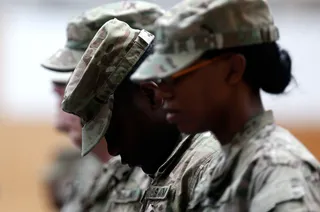U.S. Military Milestones
The U.S. military has evolved in many ways over the years.

1 / 6
Times Are Changing - Outgoing Defense Secretary Leon E. Panetta announced Wednesday plans to open thousands of combat jobs to women serving in the U.S. military, a move that many are calling the final step in making the ranks all-inclusive for the first time. Keep reading for a look other historic policies that have shaped America’s armed forces. – Britt Middleton(Photo: Getty Images/STOCK)

2 / 6
Women in Combat - Many women were already in support roles in combat zones of the Afghanistan and Iraq conflicts. The Army and the Marines plans to open most jobs to women by May 15, according to reports. (Photo: Ralph Orlowski/Getty Images)
Photo By Ralph Orlowski/Getty Images

3 / 6
Desegregation of the Military - Under President Harry S. Truman’s 1948 executive order, the U.S. military formally lifted racial barriers that kept Black and white soldiers separated for years. Africans-Americans previously served in limited support roles in many of America’s major conflicts. The all-Black 332nd Fighter Group, best known as the Tuskegee Airmen, were the first African-American pilots during World War II. (Photo: Buyenlarge/Getty Images)

4 / 6
Women in the Military - Traditional roles such as nurses and cooks were for many years the only options for women willing to serve. The creation of the Women's Army Corps (WAC) and the Women Accepted for Volunteer Emergency Service (WAVES) of the U.S. Navy during World War II put women in expanded administrative, communications and intelligence roles. (Photo: National Archives)

5 / 6
Repeal of Don’t Ask, Don’t Tell - Don’t Ask, Don’t Tell was a controversial ban on openly gay men and women serving in the military in place from Dec. 21, 1993, until it was repealed by President Obama on Sept. 20, 2011. Under the DADT, many “outted” officers were discharged for "homosexual conduct." (Photo: Justin Sullivan/Getty Images)
